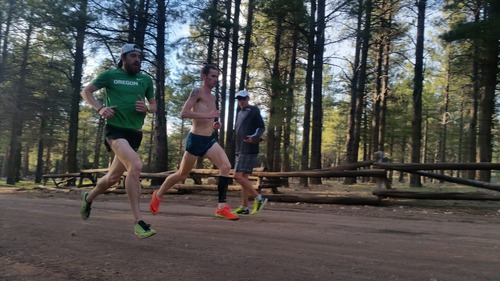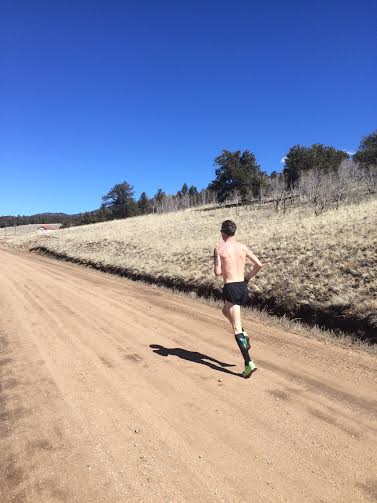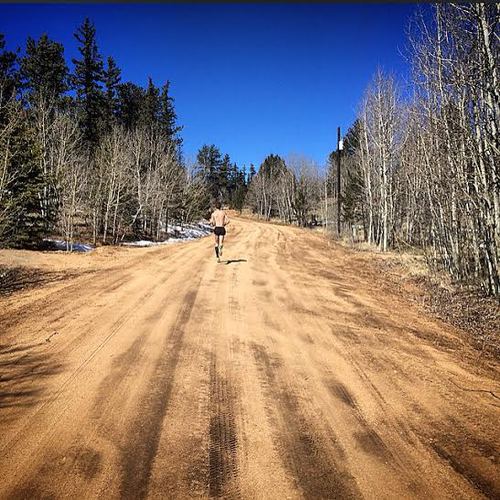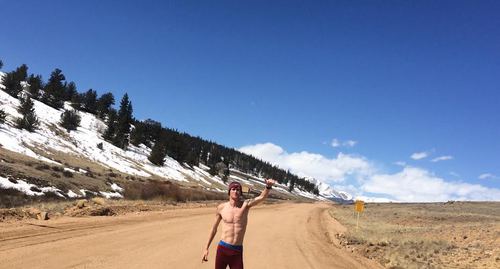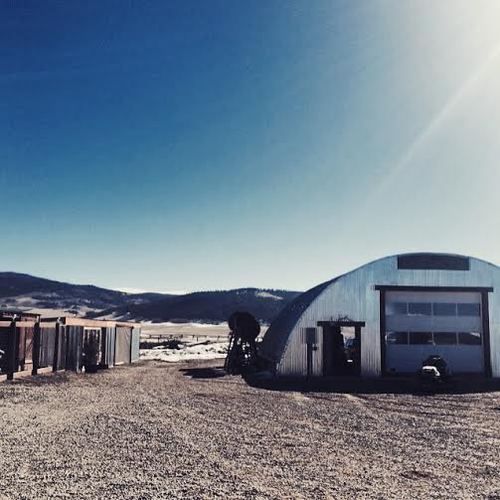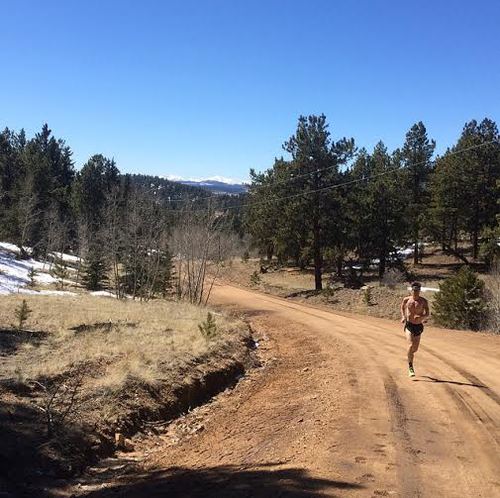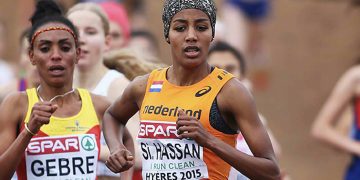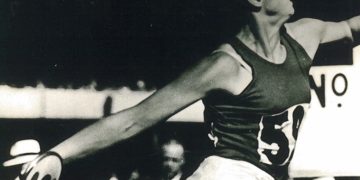He’s used to this, Ciarán Ó Lionáird. He’s used to disappointments, niggles, pains and puzzling performances. He’s 26 now, and the Irish miler and FSU graduate has been in the game long enough to know how all this works, how to pick himself up from the canvas, dust himself off, and stride back to the centre of the ring once more, unaware whether he’s about to land – or indeed absorb – a knockout punch. This is his life – one of pain, persistence, and an occasional, all-too-fleeting sojourn to paradise.
Ciarán Ó Lionáird, all photos from Ciarán Ó Lionáird
Back in February, after trailing home in 10th place in the mile at the Athlone International in Ireland, Ó Lionáird walked off the track with the spirit of an old, punch-drunk boxer who had just gone 12 rounds with the Klitschko brothers. His training partner and Nike OTC teammate, Ben Blankenship, had just run a 3:56 mile. Ó Lionáird, who had run almost every step with Blankenship through the winter months, was left trailing far, far behind. Something, he knew, was up, but what?
The hunt for an answer
He’s used to this – of setting out on the elusive search for answers when it comes to the increasingly mysterious riddle that is his own body. Elites know their bodies the way a Carnegie Hall performer knows their instruments; one imperfect string, one questionable note, and they don’t just hear it, they feel it. Ó Lionáird flew back to America after Athlone – to Phoenix, Arizona – and rocked up at the door of the man who he’s come to trust as his go-to-guy when it comes to piecing his body back together, John Ball.
He soon discovered the source of his problems; two veins in his lower leg were blocked, which resulted in severe blood pooling and a major loss of power and sensation through his left leg. A light bulb went off. “I knew I wasn’t crazy,” he says. “I knew I wasn’t a head-case. I knew there was something wrong. It turned out to be a vascular insufficiency.”
Along with that, Ball discovered that Ó LionáÃrd had a completely dysfunctional right hip, which is likely to have contributed to the vein problem in the opposing leg, along with the years of rehab exercises he had done for the problematic Achilles on that side – a problem which, Ó Lionáird says, is now fully behind him. The answers to his issues lay on the other side of that familiar torture chamber: Ball’s treatment table.
Ball’s brutal regimen
For three solid weeks, he walked into Ball’s clinic at 8am each morning. Usually, he wouldn’t get out of there until 9pm at night. While there, he put his body through an all-encompassing routine of treatment, exercises and various therapies that were designed not just to fix his current issues, but to re-educate his body how to move correctly again.
“It was a rough stint, but worth it, ” he says. “I was on the verge bawling my eyes out every night, in tears. John went in hard on that hip. I had hypersensitivity in that area, so it was sensitive to even touch. He would see me in between patients, then taught me how to do laser and shockwave therapy on myself, so I’d do that on all my different muscles, or follow a rehab plan until he wanted to treat me again.”
The problems in Ó Lionáird’s legs weren’t ones that could be cured easily but they could, crucially, be controlled to the point where he was able to train. He’d been keeping the vein problem in check through constant compression, “like people with deep vein thrombosis do when flying,” he says. There is a surgical option available, but that involves a procedure that he calls “burning out the veins”, which is no good as it creates a lack of efficiency in the leg’s ability to flush out blood, a compromise he simply can’t risk as a professional athlete.
Through it all, though, he’s kept running. “John Ball’s philosophy is: ‘never stop running’, because why would you lose aerobic fitness if you’re able to fix the problem and still train?” asks Ó Lionáird rhetorically. “I only took a week off after Athlone to try find out what was going on, but as soon as we did, I got back into running steady six-minute [per mile] pace runs.”
Running restricted
Ball also noticed, through carefully analysing Ó LionáÃrd’s race videos this year, that he wasn’t running with the same smooth efficiency of two years ago, when his indoor season included a 3:52 indoor mile. “He noticed a major reduction in my stride length,” explains Ó Lionáird. “What happens is: the glutes don’t fire then that accentuates the issue in the lower leg. The blockage is there in my vein, and there was also blockage, a tightness, in my hip capsule.”
When Ball saw the extent of his issues, he couldn’t comprehend how Ó Lionáird had managed to split a 3:58 mile as part of a distance medley relay at the Armory in January. “I couldn’t really walk properly,” recalls Ó Lionáird. “I wasn’t putting power through my left leg, but John said: ‘aerobically, you must be in ridiculous shape, because you’re carrying yourself around.'”
Indeed, Ó LionáÃrd knows that the winter work he has put in with Blankenship hasn’t suddenly evaporated, even if he hasn’t yet had the chance to show how strong his engine is due to a couple of faulty tires. He hopes that will change come the outdoor season and, at the moment, he’s running 80 to 85 miles a week. When we spoke, he was just after completing a steady workout of 16x400m in 63 seconds, completed at altitude.
All the while, he’s working away to prepare his body for the next phase of training, to try make him competitive with the world’s best later this summer. Right now, he’s training with his Nike Oregon Track Club teammates in Flagstaff, Arizona, where he’ll remain until mid-May.
The oval office
After that, he hopes, the sight of the familiar red oval will soon replace the mountainous vistas he’s currently come to enjoy on a daily basis. “I don’t know exactly when I’m going to race again,” he says. “I feel like I’ve spent too much time talking about what I’m going to do. When you see me race, you’ll see me, but I’ll guarantee that when I am out there again, I’ll be having fun with it. Life’s too short.”
Before thoughts of racing build in his mind, though, there is a large block of work to get through up in Flagstaff. While there, he’ll have everything, and indeed everyone, he needs close at hand. He’ll have Blankenship to train with, the American who ran 3:35.28 for 1500m this indoor season. Ó Lionáird looks at him and knows that if he can just get things to click, then he can be up there with his good friend when it comes to race time.
He’ll also have Mark Rowland there, the head coach of OTC – a man Ó Lionáird is never shy of labelling a genius when it comes to training middle distance runners.
And just a two-hour drive away in Phoenix, John Ball will be waiting, ready to continue the process of nurturing Ó Lionáird’s body back to its best, and beyond. “Right now, the medical plan directs the training,” says Ó Lionáird, “and at a point the training will direct the medical plan, so it will shift from the advice of John Ball on volume to Mark directing workouts.”
Ó Lionáird knows that if he just keeps banging on that door, it should eventually open. “You go through the bad stuff, and sometimes that causes other shit to happen,” he says. “At some point, though, you’ll catch a break, but it just hasn’t come for me yet. There’s no point getting emotional about it, asking why is this happening to me. It’s just how it is.”
Spoken like a man who’s been here many times before. At this stage, Ó Lionáird knows the drill. Fall down, get up, and come again.
He knows how this goes. He knows he’ll be back.
Author

Larry Eder has had a 52-year involvement in the sport of athletics. Larry has experienced the sport as an athlete, coach, magazine publisher, and now, journalist and blogger. His first article, on Don Bowden, America's first sub-4 minute miler, was published in RW in 1983. Larry has published several magazines on athletics, from American Athletics to the U.S. version of Spikes magazine. He currently manages the content and marketing development of the RunningNetwork, The Shoe Addicts, and RunBlogRun. Of RunBlogRun, his daily pilgrimage with the sport, Larry says: "I have to admit, I love traveling to far away meets, writing about the sport I love, and the athletes I respect, for my readers at runblogrun.com, the most of anything I have ever done, except, maybe running itself." Also does some updates for BBC Sports at key events, which he truly enjoys. Theme song: Greg Allman, " I'm no Angel."
View all posts

